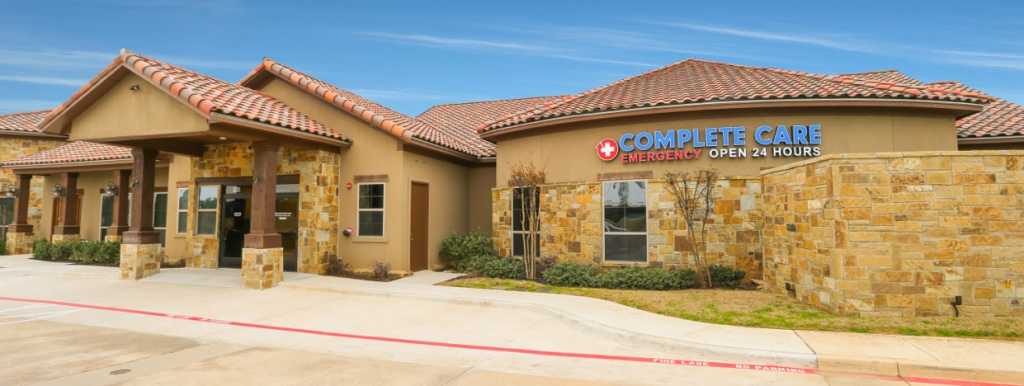The Most Common Reasons for ER Visits
Common Injuries
•
Apr 6, 2020

Whether you’re working at a dangerous job site, unintentionally ingested a poisonous substance, or had an accident while doing your sport or hobby of choice, days when you end up visiting an emergency room start out just like any other normal day. And, while some of the conditions turn out to be simply scares, others are due to serious health risks. What are the most common reasons for ER visits? And, what are the most common symptoms that indicate you need emergency medical care?
The 7 Most Common Reasons for ER Visits
1. Abdominal Pain
At some point or another, everyone experiences abdominal discomfort. Maybe you’re having cramps, feeling gassy, or ate too much. But, there are instances when it is a cause for concern. Signs that you should seek medical attention include when the pain is severe, symptoms are not subsiding after 24 hours, repeated vomiting, pain that radiates to the chest, breathing difficulties, confusion, fever, and/or blood in bowel movements.
2. Chest Pain
Minor cases of heartburn may cause chest discomfort — especially if you ate a large meal, deep-fried foods, are pregnant, or laid down shortly after eating. However, more serious issues — such as a heart attack or a blood clot — may cause chest pain. Go to the ER if you’re also experiencing a fast heartbeat, dizziness, nausea, confusion, pain that spreads to the jaw and/or left arm, excessive sweating, and/or chest tightness. If you’re by yourself and can’t drive, call 911.
3. Stroke
A stroke occurs when blood flow to the brain is blocked (ischemic stroke) or when an artery bursts and bleeds into the brain (hemorrhagic stroke). Strokes are one of the leading causes of death in the United States — after heart disease and cancer. Therefore, it’s crucial to recognize symptoms, such as sudden numbness or weakness of the face, arm, or leg; confusion, slurred speech, dizziness, severe headache, trouble seeing and/or walking, and loss of balance and coordination. A simpler way to recognize signs is the FAST acronym:
- Face drooping
- Arm weakness
- Speech is slurred
- Time to call 911
4. Fractures
Broken bones are another common reason for visits to the ER. They can vary in severity from a slight crack or fissure to the bone breaking at an angle and/or piercing the skin. They can be the result of blunt trauma — such as a car accident or fall — or they may be the result of repetitive movements. Symptoms include intense pain, tenderness, swelling, bruising, limited range of motion (or complete loss of function), and an inability to bear weight if it’s in a lower extremity. If you believe you have a fractured bone, seek medical care immediately to prevent complications such as deformity, chronic pain, post-traumatic arthritis, limited movement, and/or infections.
5. Burns
Burns can occur from something simple — such as ironing clothes or spilling a hot liquid. They can also be the result of a horrific fire. Learning to recognize the different types of burns can not only prevent infections but also save your life. Go to the ER immediately if the burn is larger than three inches, it’s on your face, hands, feet, or a joint, if it was caused by a chemical, is oozing pus, if it smells bad, and/or if you have a fever.
6. Foreign Objects in the Body.
There are several ways a foreign object can get stuck in the body — having a child who inserted a toy in their nose or ear, accidentally swallowing it or breathing it in, a small item that becomes embedded in the eyes, or getting creative during a sexual encounter. If the object has been ingested, it can sometimes pass through the digestive system without any issues. But, in other cases, you need medical assistance to get it removed. Seek emergency care if the object is sharp, large enough to cause intestinal blockage, or is stuck in the ear, nose, anus, or vagina. Call 911 immediately if it’s restricting airways or if the person is turning blue. If you know how to do CPR, do so.
7. Trauma
This includes anything from car accidents, domestic violence, gunshot wounds, stabbings, traumatic brain injuries, third-degree burns, serious falls, or any type of accident that has caused serious injury. These tend to be extreme cases where the patient’s life is at risk. In most cases, the person arrives to the emergency room by ambulance after calling 911.
24-Hour Emergency Room Services in Colorado Springs and Texas
If you or a loved one have a medical emergency, we can provide the care you need. If you have questions or need immediate treatment, your nearest Complete Care location is ready to help, no matter the time of day or night. We offer a variety of services to help you and your family in your time of need. No appointments are necessary.
Find the Complete Care location nearest you.
